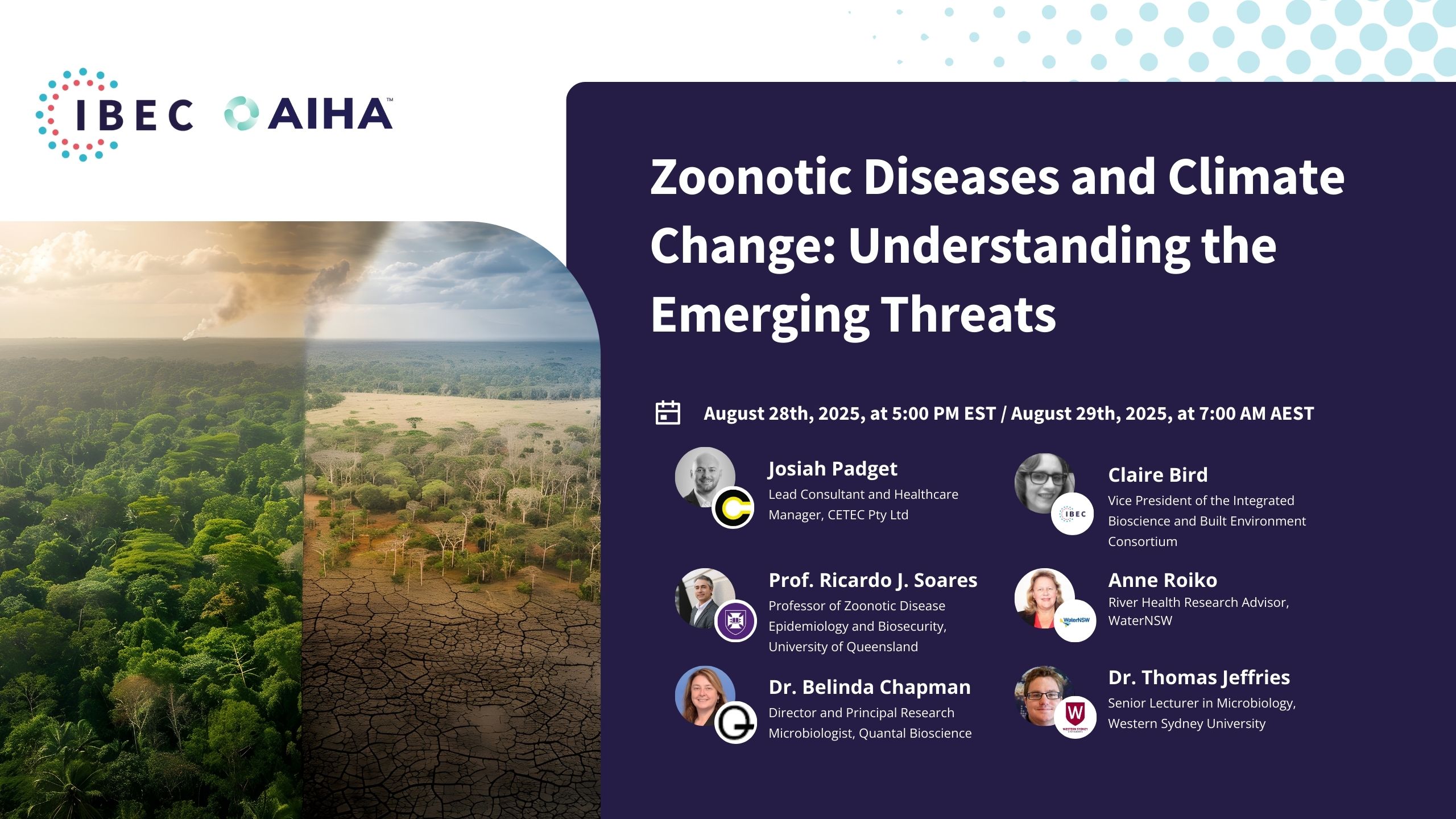Watch this session to learn about the needs regarding infectious diseases of one of our most vulnerable workforces: agriculture and construction
CLEAN Lessons Learned
Protecting Our Most Vulnerable Workers: Challenges, Solutions & Invisible Barriers
Agriculture and Construction
This was the agriculture and construction session of the CLEAN 2022 summit: Protecting Our Most Vulnerable Workers: Challenges, Solutions & Invisible Barriers with Moderators Barb Epstien and Brett Cole and speakers Bryan Ortiz, Carl Ramage, Betty-Ann Bryce, and Travis Parsons.
In this session, industry experts converged to discuss the pressing challenges of health and safety in construction and health and safety in agriculture during the COVID-19 pandemic. The conversation touched on the vast array of information countries struggle with and how this affects public trust and compliance. A significant emphasis was placed on staff shortages and the adaptive measures taken in response, especially during peak health crises like the Omicron spread.
Highlighting the pivotal role of Hispanic construction workers, the dialogue acknowledged both documented and undocumented migrant workers’ invaluable contributions, particularly in the U.S., during health crises such as COVID-19. The experts further spotlighted rural labor shortages, with discussions revolving around improving infrastructure like broadband access, which is crucial in bridging the digital and knowledge gap in these areas.
A recurring theme was the essential nature of worker engagement to ensure optimal health and safety in construction and agriculture. The sense of belonging and active participation of workers in safety protocols was stressed. The session concluded with a call to depoliticize information, focusing on trust, engagement, and safety, underscoring the necessity of a multi-layered approach in disseminating vital information, especially in diverse and rural communities.
- Information Overload: The session highlighted the challenge of navigating the wide array of health and safety information during the pandemic, emphasizing the need for clarity, especially in the construction and agriculture sectors.
- Role of Hispanic Construction Workers: The invaluable contributions of Hispanic construction workers during the pandemic were underscored, acknowledging their resilience and dedication in maintaining vital infrastructure.
- Trust and Compliance: There was a marked shift from initial high trust in leadership to waning compliance, influenced by inconsistent messaging and public fatigue.
- Addressing Staff Shortages: The experts discussed adaptive measures taken in response to the widespread staff shortages during health crises like the Omicron spread.
- Health and Safety in Construction: Emphasizing worker engagement, the dialogue reiterated the significance of a sense of belonging and active participation in ensuring optimal safety protocols in the construction domain.
- Rural Labor Challenges: The challenges posed by labor shortages in rural areas were highlighted, with discussions on potential solutions like improved broadband access.
- Health and Safety in Agriculture: The session illuminated the challenges faced in the agriculture sector, stressing the importance of tailored safety guidelines and worker involvement.
- Migrant Workers’ Contributions: Both documented and undocumented migrant workers’ critical roles during the pandemic were recognized, emphasizing their determination to keep industries running.
- Depoliticizing Information: A strong call was made to keep health and safety information apolitical, focusing instead on clear, actionable directives that foster trust and engagement.
- Multi-layered Information Dissemination: The importance of a diversified approach in conveying essential health and safety information, especially in diverse and rural communities, was emphasized, advocating for mediums beyond mass media.
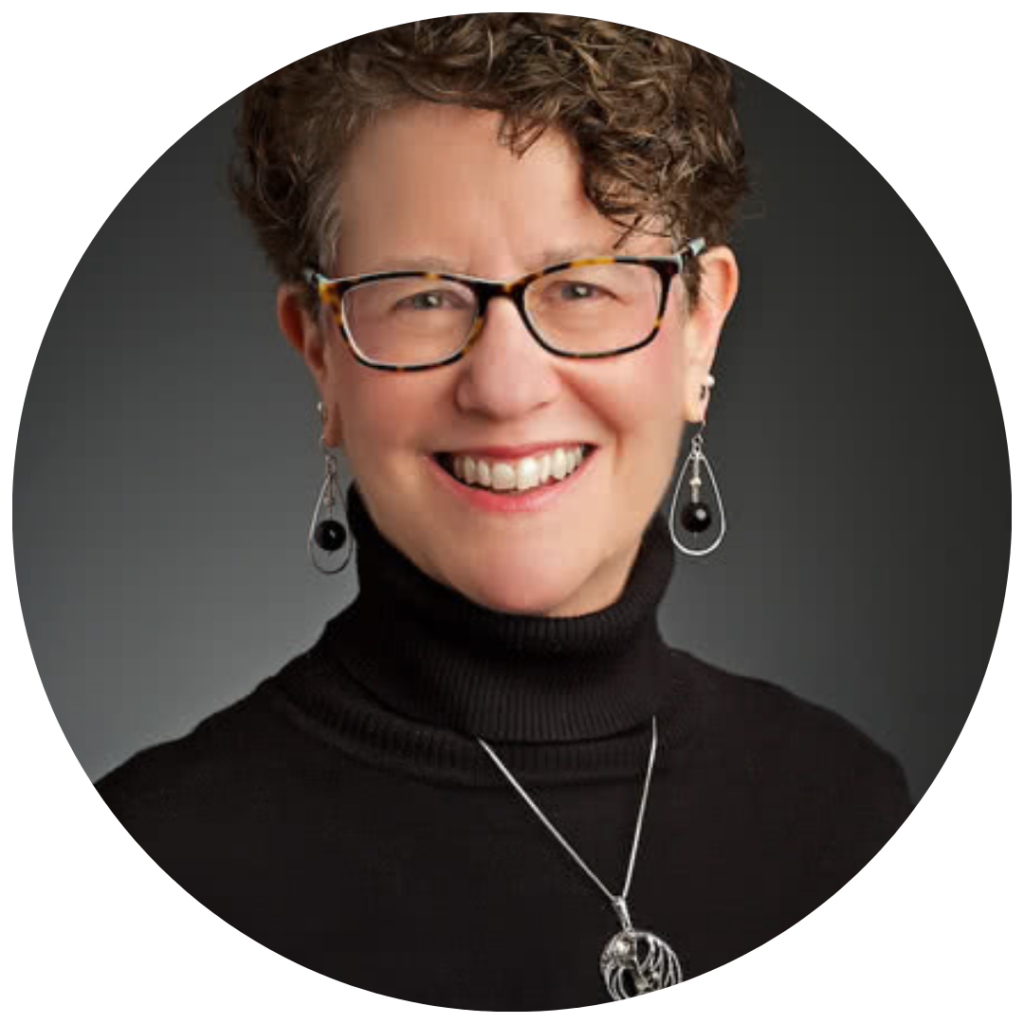
Barb Epstien
Certified industrial hygienist (CIH) on the safety services team at the Associated General Contractors (AGC) Oregon-Columbia chapter
Barb Epstien is a certified industrial hygienist (CIH) on the safety services team at the Associated General Contractors (AGC) Oregon-Columbia chapter. She provides exposure assessments, training, and general IH technical support to AGC chapter members to help reduce jobsite health hazard risks in the construction community. Her 30+ years of experience in occupational and environmental health has encompassed consulting, training, and regulatory compliance in various industries. Barb helped the chapter publish multiple COVID-19 resource guides and has assisted with outreach and communication efforts throughout the pandemic. An active member of the American Industrial Hygiene Association (AIHA), Barb currently serves on the Construction Committee and Women in IH Committee. She was a member of the project teams that published Focus Four for Health (2019) and Focus on Construction Health: COVID-19 (2020). She was also the lead author of the chapter on IH issues in construction for The Occupational Environment: Its Evaluation, Control, and Management. Barb has a master’s in public health from the University of Illinois-Chicago, and she is an AIHA Fellow.

Brett Cole
Managing Director/Chief Occupational Hygienist at Biosafety International/
Brett is the Managing Director/Chief Occupational Hygienist of Biosafety International/Member of the Indoor Air Quality Association of Australia and the Education & Training Committee (ETC) of the Association for Biosafety for Australia and New Zealand. Brett has worked in contamination control/hygiene in the High containment, Life Sciences, Healthcare, and Food/Beverage Markets for over 20 years. His formal qualifications are in Environmental Microbiology & Chemistry and later in Occupational Hygiene and Toxicology.
His experience has been in Academic microbiological research, Medical device High-Level Disinfection; Engineering controls for contamination control in the built environment, materials handling, infectious and contaminated waste and facility microbial testing, decontamination, and remediation. He has worked in Australia, New Zealand, Europe, North America, and Asia Pacific on many contamination projects, from Beta-lactam site remediation for the Pfizer Vaccine Development, Research Animal Facility Infection, Pharmaceutical decontamination, Mold Infestation, Biological Contaminated Building decontamination.
In 2018, Brett wrote and presented the training material for the Safe Use of Biological Safety Cabinets for the International Federation of Biosafety Associations (IFBA) and is a Certified Biorisk and Biowaste Professional with IFBA. He is also the lead Biosafety and biosecurity Consultant to the PNG HIV and Malaria High Containment Facility in Port Moresby. During the COVID-19 Pandemic, he has worked with two Federal Government Task Forces on PPE and Ventilators, IAQA Guidelines for Validation of Virally contaminated buildings as well as being the first International Contributor to a Technical Working Group on Decontamination for COVID-19 and a founding Contributor of IBEC.
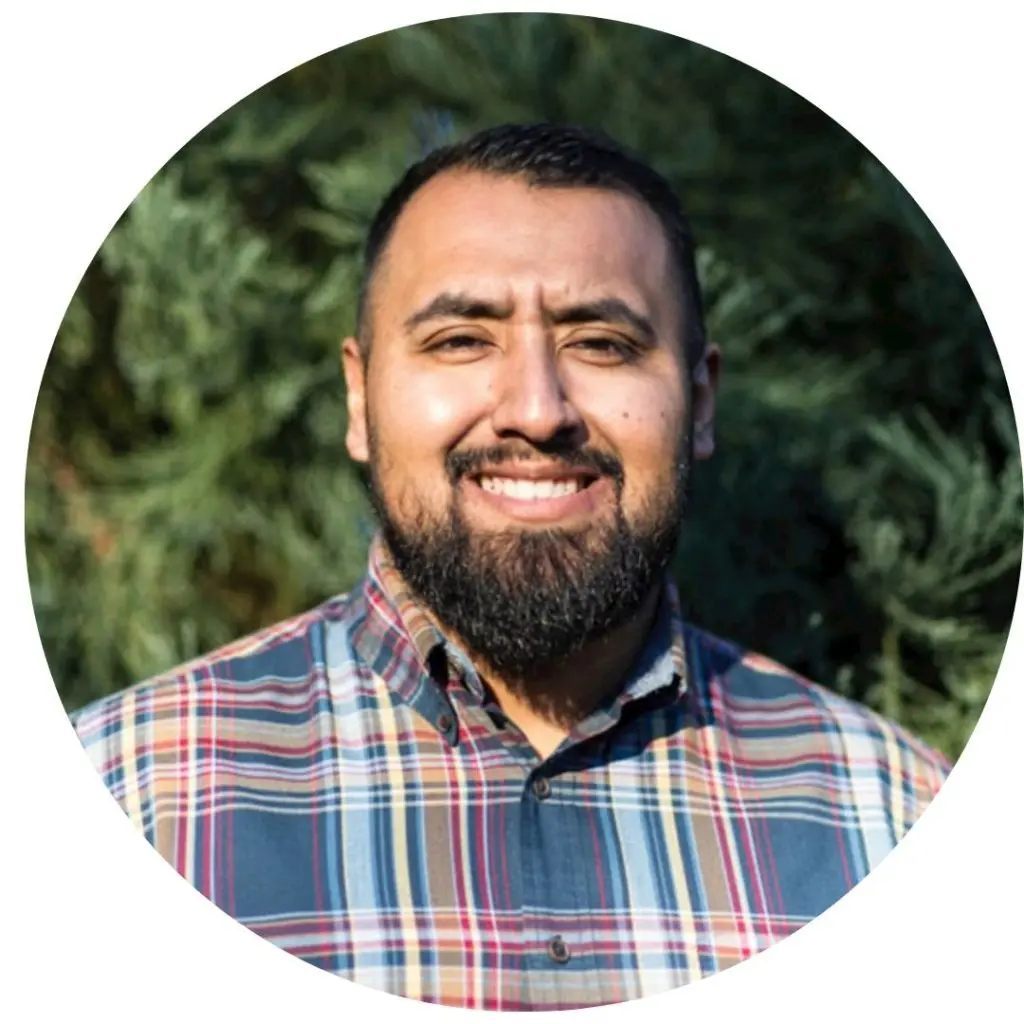
Bryan Ortiz
Safety Management Consultant at Associated General Contractors Oregon-Columbia Chapter
Bryan Ortiz is a Safety Management Consultant at Associated General Contractors Oregon-Columbia Chapter. He was born in Mexico City, Mexico, and has worked in the construction industry for over 12 years. Bryan is a former Oregon OSHA Safety Compliance Officer and has been the safety director for heavy civil construction firms in Oregon. He holds a CHST from the Board of Certified Safety Professionals (BCSP). Bryan is fluent in Spanish and leads the AGC chapter’s bilingual English/Spanish efforts. He assisted with the Spanish language of AIHA’s Focus on Construction Health: COVID-19 (2020). He is actively involved in the LatinoBuilt Foundation, the Latinx Environmental, Health and Safety Professionals (LEHS), the American Society of Safety Professionals (ASSP) Cascade Chapter, and the Oregon OSHA Construction Advisory Committee (CAC).
Bryan specializes in creating relationships with employees of all ranks to create a strong and sustainable safety culture. His focus is to ensure every employee goes home to their families at the end of the day.
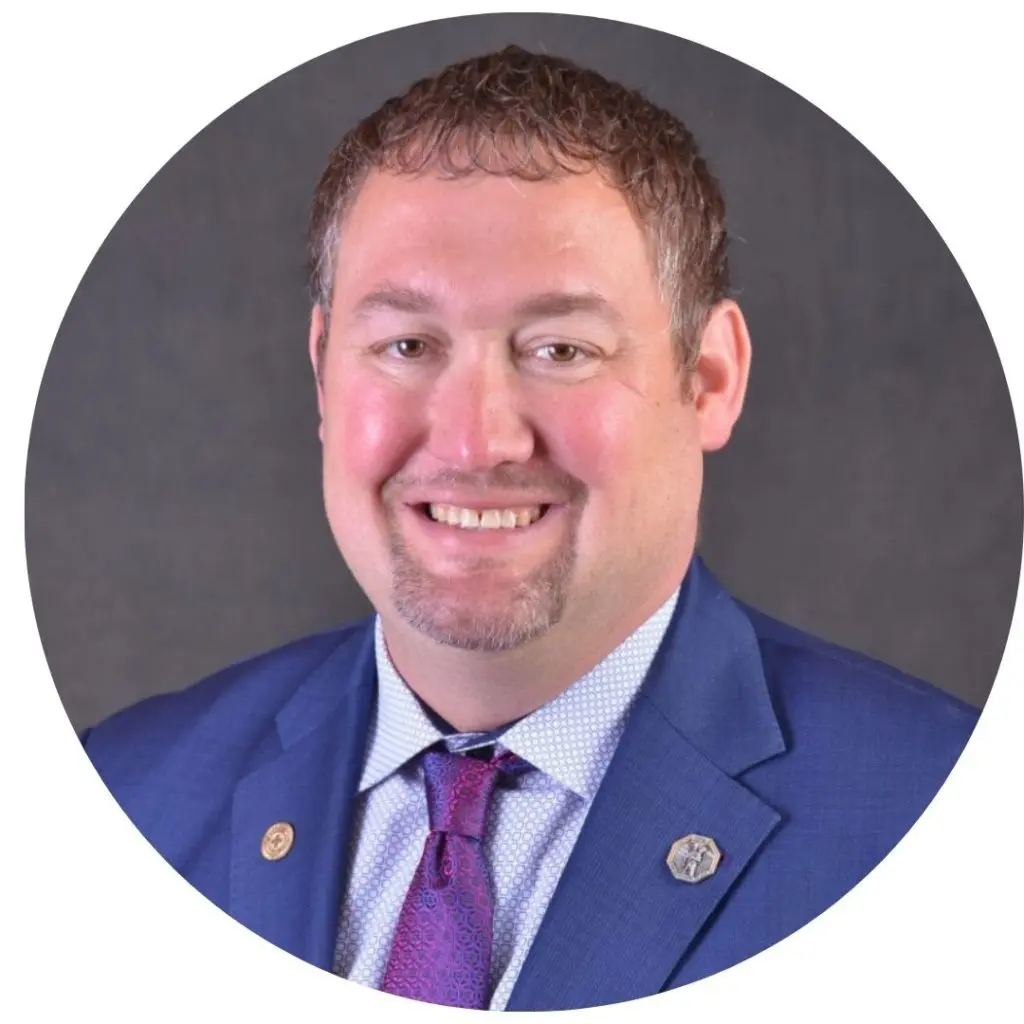
Travis Parsons
Director of Occupational Safety and Health
Travis has over 25 years of experience in safety and has worked at the Laborers’ Health and Safety Fund of North America (the Fund) since 2002. At the Fund, Travis provides various safety and health services to contractors and affiliates of the Laborers’ International Union of North America (LiUNA) for projects throughout the United States and Canada. His primary focus areas include industrial hygiene, hazard awareness and correction, ergonomics, infection control, and overall site safety. Travis is a proud member of LiUNA Local 11, Washington, DC/Maryland/Northern Virginia. He also serves as Vice President for the Labor Division of the National Safety Council (NSC) sits on the Council’s Board of Directors, Labor Advisory Committee, and Co-chairs their Delegates’ Committee. Travis has a diverse background in safety and health.
While focusing on the construction industry, he has experience working with the general industry, public employees, and worker training. He is a recognized OSHA Master Instructor for North America’s Building Trades Unions (NABTU). He has served on various safety-related boards and committees throughout his career (e.g., NABTU Safety and Health Committee, National Demolition Association Safety Committee, ANSI/ASSP A10 Standards, AFL-CIO Safety and Health Committee, NIOSH-NORA Construction Sector and Hearing Loss Prevention Cross-Sector Councils-CDC, etc.) Additionally, he serves on the Virginia Safety and Health Codes Board for Virginia’s state OSHA program. He has a Bachelor’s degree in Physiology and a Master’s degree in Occupational Safety and Health/Industrial Hygiene, both from WVU. Go, Mountaineers! Outside work, Travis enjoys cycling, watching sporting events, and spending time outdoors with his family.

Carl Ramage
Director of Rautaki Solutions
Carl is a Director of Rautaki Solutions and supports national and international biotech organizations across public and private sectors. He provides strategic and operational direction in biosafety, bio-risk management, and the commercialization of biotech products. This includes the development of regulatory strategy, drafting regulatory dossiers for submission and assessment by Regulators, and development, and implementation of compliance frameworks and plans for physical containment facilities and programs for the intentional release of GMOs into the environment. Carl sits on several agriculture industry committees, is the current appointed chair of the La Trobe University Institutional Biosafety Committee, a former board member of the Association of Biosafety Australia and New Zealand, and is a graduate of the Australian Institute of Company Directors. Carl is also the only South Pacific Excellence Through Stewardship auditor, a program promoting product stewardship and quality management for the life cycle of agricultural technology products.
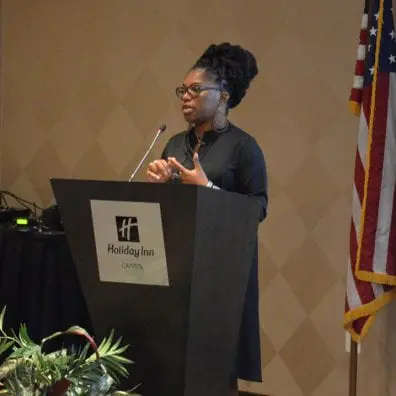
Betty-Ann Bryce
Senior Policy Analyst at the Organisation for Economic Co-operation and Development (OECD)
Betty-Ann Bryce is a Senior Policy Analyst at the Organisation for Economic Co-operation and Development (OECD) in the Centre for Entrepreneurship, Regions, and Cities in the Regional and Rural Unit. She joined the OECD from the White House Office of National Drug Control Policy (ONDCP), where she served as a Special Advisor for Rural Affairs. She was detailed to ONDCP from the U.S. Dept. of Agriculture, where she held different roles, including Senior Policy Advisor, Rural Health Liaison, and Financial Investment Specialist in the Rural Development Agency. Betty-Ann is a licensed Attorney with an MPA in Economic and Territorial Development from The Paris Institute of Political Studies (Sciences-Po) in France and a MPA in Economic and Political Development from Columbia University, School of International and Public Affairs (SIPA) in the United States.
Kenneth Martinez 00:21
This session focuses on two vast industries: agriculture and construction, all within one hour. But our skilled moderators are certainly up for the challenge. Let me introduce Barb Epstien first. Barb is a Certified Industrial Hygienist with the safety services team at the Associated General Contractors (AGC), Oregon-Columbia Chapter. With over 30 years of experience in Occupational Environmental Health, she offers expertise in exposure assessments, training, and general industrial hygiene technical support to the AGC Chapter members. Notably, Barb has assisted in publishing multiple COVID-19 resource guides and played a crucial role in communication efforts during the pandemic. An active member of the American Industrial Hygiene Association (AIHA), she has served on various committees and project teams. Furthermore, Barb has authored chapters focused on industrial hygiene issues in construction for esteemed publications. She holds a Master’s in Public Health from the University of Illinois, Chicago and is an AIHA fellow.
Now for our international twist. Brett Cole, hailing from Australia, is the Managing Director and Chief Occupational Hygienist for Biosafety International. A member of the Indoor Air Quality Association of Australia, Brett has over two decades of experience in contamination control hygiene across various sectors. His impressive resume includes working in multiple countries on diverse projects ranging from pharmaceutical decontamination to bio-contamination remediation. He is also associated with the International Federation of Biosafety Associations and has collaborated with Australian federal government task forces on various crucial projects.
Barb Epstien 03:52
I believe Brett may not have joined yet. But, in the meantime, let’s introduce our construction speakers. Travis Parsons, Associate Director of Occupational Safety and Health at the Laborers’ Health and Safety Fund of North America, boasts over 25 years in safety and health. At the Fund, a part of the Laborers’ International Union of North America (LIUNA), he provides a multitude of safety services for projects across the US and Canada. Travis is deeply involved in various boards and committees at the national level and has expertise across both the construction industry and general public employment sectors.
Additionally, we have Bryan Ortiz from the Associated General Contractors Oregon-Columbia Chapter. A seasoned professional with 12 years in construction, Bryan is fluent in both Spanish and English, playing a pivotal role in bilingual education and outreach. Passionate about fostering a robust safety culture, Bryan actively collaborates with various organizations to enhance safety standards.
Brett Cole 08:01
Apologies for the delay. Technical difficulties aside, it’s an honor to join this discussion alongside Barb, Travis, and Bryan. Now, let’s introduce our agricultural speakers. First, Betty-Ann Bryce, a Senior Policy Analyst at the Organisation for Economic Cooperation and Development (OECD). With diverse roles in the US Department of Agriculture and other organizations, she has extensive experience in policy analysis and rural affairs. Betty-Ann’s educational background is equally impressive, with credentials from institutions like the Sciences Po in France and Columbia University.
Next, Dr. Carl Ramage, Director of Rautaki Service Solutions, offers support to biotech organizations worldwide. He’s actively involved in various agricultural industry committees and has been a significant contributor to the field of biosafety and biotechnology commercialization.
Building on what we’ve learned from previous sessions, it’s evident that many challenges are common across sectors. This session will delve deep into the challenges faced by vulnerable workers in agriculture and construction. From migrant workers and immigrants to women and other disadvantaged groups, the pandemic has had a profound impact. Today’s discussion will center on themes like managing uncertainty, devising mitigation strategies, and effective communication. Additionally, we’ll also touch upon integrating emerging science into routine safety and health practices.
Barb, would you like to steer the discussion towards construction-specific topics?
Barb Epstien 11:48
Thanks, Brett. We have a few questions to begin with. Starting with Bryan, given my experience working with you, we’re aware that construction workers are particularly vulnerable to occupational health hazards. This is primarily due to the dynamic, transient, and multilayered nature of the workplace and workforce. So, I’d like to discuss the factors of the COVID-19 pandemic that have specifically impacted the native Spanish-speaking workforce.
Bryan Ortiz 12:22
Thank you for the question, Barb. As you mentioned, this topic is dear to me. I appreciate Brett highlighting the migrant workers and immigrants who are part of this vulnerable workforce segment. I immigrated to the States at 13, speaking no English. I’ve since managed to learn the language to a level where I’m comfortable communicating. However, within the workforce, this language barrier can result in vulnerability. Historically, there seems to have been a superficial relationship between employers and employees when it comes to safety training. An example is a short safety meeting where the employer asks if there are any questions, and non-native speakers often refrain from inquiring. This isn’t necessarily because they understand everything, but because they might not want attention drawn to them. I experienced this when learning English; I hesitated to ask questions fearing I might not understand the responses. However, the pandemic changed dynamics within the Latino community. The idea of potentially bringing an invisible virus home resonated deeply, prompting many to step out of their comfort zones, seeking more resources and training. I’m not sure many employers were prepared for this level of engagement from the Latino workforce, which presented additional challenges.
Barb Epstien 14:57
Thanks for sharing, Bryan. I have a question for Travis. I know the laborers invested significant effort into contact tracing during the pandemic’s early days. However, I’ve heard that some organizations faced resistance and confusion around this. Can you discuss the challenges faced, the steps you took, and how you’re now applying those strategies as the pandemic continues?
Travis Parsons 15:33
Thank you, Barb. When the pandemic began, contact tracing was largely a foreign concept for our industry. With the construction sector having multifaceted worksites and diverse personnel, it was challenging. Larger contractors seemed to adapt quicker, perhaps due to prior experience or resources. However, many smaller contractors struggled due to a lack of resources. Initially, the focus was on educating everyone about contact tracing, ensuring they were comfortable with the process, and encouraging them to speak up about health concerns. This was especially tough for workers who might lose pay if they didn’t show up for work. Our efforts also aimed at promoting collaboration between local health departments and employers for effective contact tracing. The situation remains varied across sites even now, with some performing contact tracing while others don’t. Overall, contact tracing highlighted the vulnerabilities and challenges faced by workers, and it continues to be an issue.
Brett Cole 18:08
Thanks for that insight, Travis. The complexities of construction and varying workplaces indeed make contact tracing challenging. Now, turning to Betty-Ann, could you share your experiences during the pandemic in relation to the agricultural sector?
Betty-Ann Bryce 18:35
Certainly, and thank you for including me in this discussion. My experience encompasses rural areas, not just limited to agriculture. Rural regions were notably vulnerable during the pandemic due to a higher percentage of at-risk individuals, such as the elderly and those with health conditions. These regions, with their less diversified economies, had a significant proportion of essential workers in fields like agriculture and food processing, which aren’t conducive to remote work. Unlike urban areas, the benefits of teleworking weren’t as prevalent in rural settings. Additionally, even before the pandemic, health infrastructure in rural areas across the 38 member countries of the Organization for Economic Co-operation and Development (OECD), which I represent, was lacking. Many rural hospitals were closing. With the onset of the pandemic, health workers from these areas were often relocated to assist cities, leaving rural health facilities overstretched. These vulnerabilities naturally contributed to the labor issues we observed.
Brett Cole 20:32
Thank you, Betty. You’ve highlighted some compelling points, especially concerning not only workers in rural areas but also the support services available during outbreaks or similar situations. I’d like to revisit this topic later in our discussion. Now, I’d like to turn the floor over to Dr. Carl Ramage. Born in New Zealand but now residing in Australia, could you share your insights and experiences related to the pandemic in both Australia, New Zealand, the Asia Pacific region, and globally?
Carl Ramage 21:10
Thank you, Brett. Good evening to everyone, and a good morning to those in the southern hemisphere. It’s Australia Day today, so after this session, we’ll be enjoying some festivities, including a barbecue. Before delving into other matters, I’d like to touch on a point Brett mentioned. Many perceive construction and agriculture as singular components. For instance, when people think about construction, they might visualize building a home. Similarly, in agriculture, they might think only of a farmer sowing and reaping crops. However, both sectors are multifaceted. Impacting one area can have ripple effects throughout the entire sector. In agriculture, if farmers face challenges, it affects the entire rural community. During the pandemic in Australia, while farmers experienced bountiful seasons and displayed resilience, local communities were significantly affected. Measures like lockdowns were implemented to curb COVID-19’s spread. As noted, already vulnerable health services faced further strain as medical professionals were relocated to more densely populated areas. The broader impact of the pandemic was not always directly on farming but certainly affected rural communities. A silver lining for countries like Australia and New Zealand was their initial strategy of virus elimination. While this approach spared our health systems from being overwhelmed, it also led to extended lockdowns. Such measures had a profound impact on businesses and the economy. In agriculture, Australia and New Zealand excel at biosecurity. So, dealing with infection control, diseases, and similar challenges isn’t new to us. For farmers, practicing social distancing is straightforward, but supply chains face significant obstacles.
Brett Cole 24:27
It seems we lost connection with you for a moment, Carl.
Carl Ramage 24:30
It appears so, Brett. Maybe that was a hint for me to conclude.
Brett Cole 24:35
Not at all, just a technical hiccup. We’ve had our fair share, like my tardiness earlier. Carl, anything else you’d like to add?
Carl Ramage 24:46
We can delve deeper into some topics as our discussion progresses.
Brett Cole 24:50
Understood. I’ll now hand it back to Barb, who has more questions for our panelists.
Barb Epstien 24:56
I believe Travis wanted to expand upon Carl’s points.
Travis Parsons 25:03
Indeed, I’d like to build on what Betty, Carl, and Bryan have said. We all share a commonality as essential workers. From the outset, our work has been continuous. An aspect, though perhaps evident, but often overlooked, is the mental health and anxiety arising during this global crisis. The mental well-being of both the public and our frontline workers, the real heroes keeping our economies running, became prominent. These workers ensured food supply, infrastructure maintenance, and more. It’s crucial to consider the stress and mental health implications we’ve faced as a global society. The challenge of doing more with fewer resources was evident. For instance, in New York City, our workers constructed temporary hospitals due to capacity issues. Seeing news reports about mass graves added to the strain. This, combined with concerns about bringing the virus home, ensuring workplace hygiene, and managing disrupted supply chains, amplified the anxiety. Mental health is a universal concern across professions. Thank you.
Barb Epstien 26:59
That trend expands beyond agriculture and construction. Every sector, in its unique and common ways, has experienced this. It’s significant.
Carl Ramage 27:12
We’ve observed similar trends in Australia. While many associate the surge in mental health challenges with the pandemic, we’ve found that some of this anxiety actually stems from feelings of guilt. Essential workers felt guilty about continuing to work while others lost their jobs. They also worried about potentially contracting the virus and bringing it home. This emotional turmoil was prevalent among essential workers in both construction and the agricultural supply chain. The individuals I spoke to expressed guilt about still working while their peers faced unemployment due to business closures.
Brett Cole 28:17
Betty-Ann, any thoughts?
Betty-Ann Bryce 28:19
Building on that, during my tenure with the federal government, we noticed an increase in farmer suicides in the United States. It’s also worth noting the overdose epidemic. Prior to the pandemic, overdose deaths had already been on the rise. This was especially pronounced in rural areas. We’ve observed heightened stress levels among agricultural producers due to economic conditions, compounded by incidents like milk producers having to discard milk. The challenges are many, and they’re intensified by the lack of mental health providers in rural areas, making it hard for residents to find the support they need. That’s why we need a comprehensive approach to addressing rural issues.
Barb Epstien 29:49
Indeed, these issues are multi-layered and complex. The opioid crisis, especially among construction workers, has escalated, and overdose rates have surged.
Travis Parsons 30:12
I concur. In construction, we’ve seen record highs in suicides, mental health issues, and opioid abuse. These challenges are partly why we’re having this discussion. The pandemic has only amplified these problems.
Carl Ramage 30:37
Farmers already deal with a baseline level of stress from pests, diseases, and climate variability. When managing vast tracts of land and significant financial transactions, mistakes can have severe consequences. Add a pandemic to the mix, and it’s unsurprising that anxiety levels have soared. As Betty-Ann pointed out, there’s a lack of adequate support services. And naturally, farmers aren’t known for readily discussing their emotions unless it’s in a relaxed, social setting.
Barb Epstien 31:26
This brings me back to something Bryan touched on earlier. How can we better support and protect non-native speaking construction and agricultural workers?
Bryan Ortiz 31:51
Thanks, Barb. The pandemic has highlighted communication gaps between employers and non-native speaking employees. Some employers might view this demographic as a burden, but it’s crucial to recognize them as integral to the business’s success. Just as a construction company wouldn’t venture into plumbing without expertise, businesses reliant on non-native speakers should invest in skilled communicators who can truly connect with these workers. Simply translating documents isn’t enough. Handing a Spanish document to a worker assumes literacy and comprehension, which might not always be the case. Recognizing the value of these employees and incorporating them actively into safety programs is essential, whether it’s in construction or agriculture.
Carl Ramage 34:10
Australia’s experience differs slightly. Our workforce isn’t predominantly migrant-based, but casual contract labor, especially in horticulture, is significant. A majority of our horticultural workforce consists of tourists or “backpackers.” However, with fewer of them available, our supply chains have been hit. The issue goes beyond on-site labor. Without workers to manage distribution, even if harvest is successful, there may be no means to distribute the produce. Currently, our supermarkets face shortages due to these supply chain disruptions. And casual workers face a dilemma: since they don’t receive sick pay, staying home due to illness means no income. Although the government has tried to address this, the situation remains challenging.
Brett Cole 37:11
Excellent. Those recent points raised some really good ongoing questions. I’d like to open this to the forum. Considering the unique nature of construction sites and agriculture workplaces, which can sometimes be remote and have varied access to services in both rural and urban settings, has this compounded the challenges in communicating safety awareness, especially concerning COVID? How have the unique characteristics of these workplaces intensified these challenges?
Betty-Ann Bryce 37:55
Speaking generally from the perspective of the Organisation for Economic Co-operation and Development (OECD) countries, I can affirm that we observed significant disruptions and labor shortages similar to what Carl mentioned, especially in rural areas. These disruptions emphasized the importance of migrant workers. I’d like to emphasize that this presents an opportunity. In our organization, we advise governments on appropriate actions. The gaps became apparent, showcasing how vital our migrant workers are. It’s a chance for us to develop more tailored policies to both attract and support these workers. From my experience in the U.S., communication about the pandemic was indeed more challenging in rural areas. This challenge often stems from varying political beliefs and a general skepticism toward central messages. My work over 18 years has been rooted in rural areas. We initiated virtual roundtables with rural sheriffs, prosecutors, pastors, and others, ensuring consistent communication and capitalizing on established trust. It’s essential to have trustworthy representatives deliver messages in rural settings. We also sought to translate and adapt messages from the Centers for Disease Control and Prevention (CDC) to resonate with rural communities, making the guidance more relatable and prioritizing safety.
Travis Parsons 41:32
I completely agree with Betty-Ann, especially on the topic of trust. Determining trustworthy sources has become challenging with the rise of social media and the spread of misinformation. In the U.S., our regulatory system, specifically the Occupational Safety and Health Administration (OSHA) Rule 2.2, didn’t provide specific guidelines for infectious diseases during the pandemic. We had to rely on the ever-evolving guidelines from the CDC. In the construction industry, where policies and training are paramount, adapting to frequently changing guidelines was difficult. One of our primary training methods, the toolbox or tailgate talks, became less feasible due to social distancing requirements. The construction industry, which heavily relies on hands-on training, found it challenging to adapt to the constraints of the pandemic.
Barb Epstien 43:45
Building on what you’ve said, Travis, technology and its accessibility have been significant concerns. Transitioning in-person training like toolbox talks to virtual platforms like Zoom presented challenges. Not every worker has access to devices suitable for these virtual sessions, and many end up attempting to follow training on a small phone screen. The difference between an in-person session and a virtual one on a tiny screen is stark. Bryan and Travis, how do you address these technological challenges, considering the varied proficiency and access to these tools among construction workers?
Bryan Ortiz 45:04
When we send someone a Zoom link for training, we make many assumptions. We assume they possess a smartphone, an email account, and the know-how to use these platforms. As Travis pointed out, the construction industry attracts hands-on learners, individuals who thrive in tangible, 3D environments. Zoom sessions can’t replicate this experience. Moreover, the efficacy of such virtual training sessions is questionable.
Betty-Ann Bryce 46:32
I’d like to chime in on this. From a government perspective, inter-agency coordination becomes crucial. Many are unaware of the services various governmental agencies can offer. For instance, while the Department of Health was at the forefront of addressing the pandemic, the Department of Agriculture had resources to provide iPads and phones to rural communities, irrespective of their occupation. Understanding which department or agency can help in a particular situation becomes crucial. It’s the responsibility of the federal government to coordinate and streamline these efforts, ensuring the right support reaches those in need.
Carl Ramage 49:06
In Australia, we were overwhelmed with information from multiple sources. We received information from our federal government, and each state also provided their own guidance. Daily briefings were conducted by our chief health officers, detailing the current situation and presenting new rules. Additional information was available online. Every business was mandated to have a QR code for check-ins to assist with contact tracing, a measure that Travis discussed. To further support these measures, industries developed checklists, guides, and strategies for managing on-site tasks and meeting the obligations set by higher authorities. However, despite providing vast amounts of information and training, compliance remained a challenge in Australia. Initially, we observed strong compliance, drawing parallels with New Zealand’s remarkable efforts in keeping COVID at bay for a prolonged period. But with time, people grew weary. They began to question the utility of following protocols when enforcement appeared inconsistent, such as police not always checking for permits at borders. This laxity combined with fatigue led to dwindling compliance. A significant challenge emerged in the form of declining trust in leadership. At the start of the pandemic, public trust in leaders was high. But over time, skepticism grew. For example, after enduring lockdowns for 267 days, the population was frustrated to witness COVID cases in Australia surge from 600,000 to 1.6 million within just six weeks. Trust in the government plummeted as people questioned the efficacy of the measures they had been told to follow. Maintaining compliance over the next six to twelve months will be a major challenge for us.
Barb Epstien 51:33
Those are crucial insights, Carl. We have a few minutes to take questions from the audience. If someone can provide those for us, that’d be great. I see a question from Claire: “How have your sectors responded to increased staff shortages during the Omicron spread? And what strategies should be in place to prevent similar outcomes with future strains of airborne infectious diseases?”
Carl Ramage 52:11
I’ll give a brief response to allow others to weigh in. One significant move from our government was to alter visa rules, allowing Pacific Islanders to assist with harvests in the agricultural sector. But our approach has largely been reactive, frequently updating definitions and rules, even stopping contact tracing at times. We are currently in a ‘band-aid’ mode, and a conclusive answer might be premature.
Barb Epstien 52:55
That’s an unfortunate yet accurate assessment.
Travis Parsons 52:58
It’s a universal struggle. Addressing the worker shortage is challenging. Our focus is on recruiting within our trades, targeting younger workers. But a definitive solution remains elusive.
Bryan Ortiz 53:12
Travis, you’re right about the importance of nurturing a pipeline of workers for our industries. We must emphasize apprenticeships and encourage people to join trades. I’d also like to highlight the crucial role migrant workers, documented or not, played during the pandemic, particularly in the US. Many of them continued working despite the risks, primarily because they lacked access to benefits like unemployment. Their dedication deserves acknowledgment.
Brett Cole 54:06
Betty-Ann, would you like to offer any closing remarks?
Betty-Ann Bryce 54:09
Certainly. We’re still deciphering the lessons from the pandemic. Rural areas have historically faced labor shortages. Our current focus is on enhancing broadband infrastructure, which, while not a cure-all, can facilitate training, video access, and connections to health officials. Another positive outcome is President Biden’s recent initiative, allocating billions for broadband deployment in underserved areas. Concurrently, rural health concerns remain, with hospital closures presenting unique challenges. We’re adapting in real-time, and there are no definitive solutions yet.
Travis Parsons 55:48
If I may add one last point, it’s the significance of worker engagement. Without it, maintaining safety and health on the job, during a pandemic or otherwise, is impossible. Engaged workers feel a sense of belonging, crucial for fostering a safe environment.
Brett Cole 56:18
Thank you, Travis, and all our panelists. A key takeaway from our discussion is the need to depoliticize information, focusing solely on safety. Emphasis should be on diverse communication channels, building trust, and ensuring worker engagement amidst rapidly changing scenarios. I appreciate the shared insights, and I’ll now hand it over to Kenneth for concluding remarks.
Kenneth Martinez 57:30
Thank you, Brett, Barb, and all the panelists. Discussing two significant industries with such depth has been insightful. Based on the feedback, the discussion was truly on point. Thanks to everyone for their valuable contributions. This session has been a wonderful conclusion.
Watch the other sessions of the 6-part NAS CLEAN Lessons Learned series
Gig Economy Workers Discussion Panel: Knowledge Dissemination and Application
Go to this sessionEducation: Risks and Recommendations
Go to this sessionKeynote Presentation: Higher Risk Occupations and COVID-19
Go to this sessionFirst Responder Discussion Panel: Risks, Training, PPE and Decontamination
Go to this sessionSponsor Spotlight
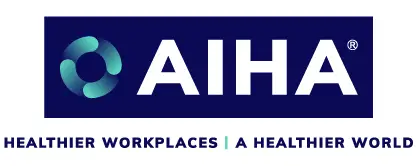
American Industrial Hygiene Association (AIHA)
AIHA is the association for scientists and professionals committed to preserving and ensuring occupational and environmental health and safety (OEHS) in the workplace and community. Founded in 1939, we support our members with our expertise, networks, comprehensive education programs, and other products and services that help them maintain the highest professional and competency standards. More than half of AIHA’s nearly 8,500 members are Certified Industrial Hygienists, and many hold other professional designations. AIHA serves as a resource for those employed across the public and private sectors and the communities in which they work.
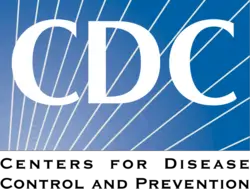
Centers for Disease Control and Prevention
CDC is the nation’s leading science-based, data-driven service organization that protects the public’s health. For over 70 years, they’ve put science into action to help children stay healthy so they can grow and learn, to help families, businesses, and communities fight disease and stay strong, and to protect the public’s health.
Have a question about the event?
Connect with IBEC experts directly! Drop your queries below, and let's further the dialogue on preventing the spread of infectious diseases.


